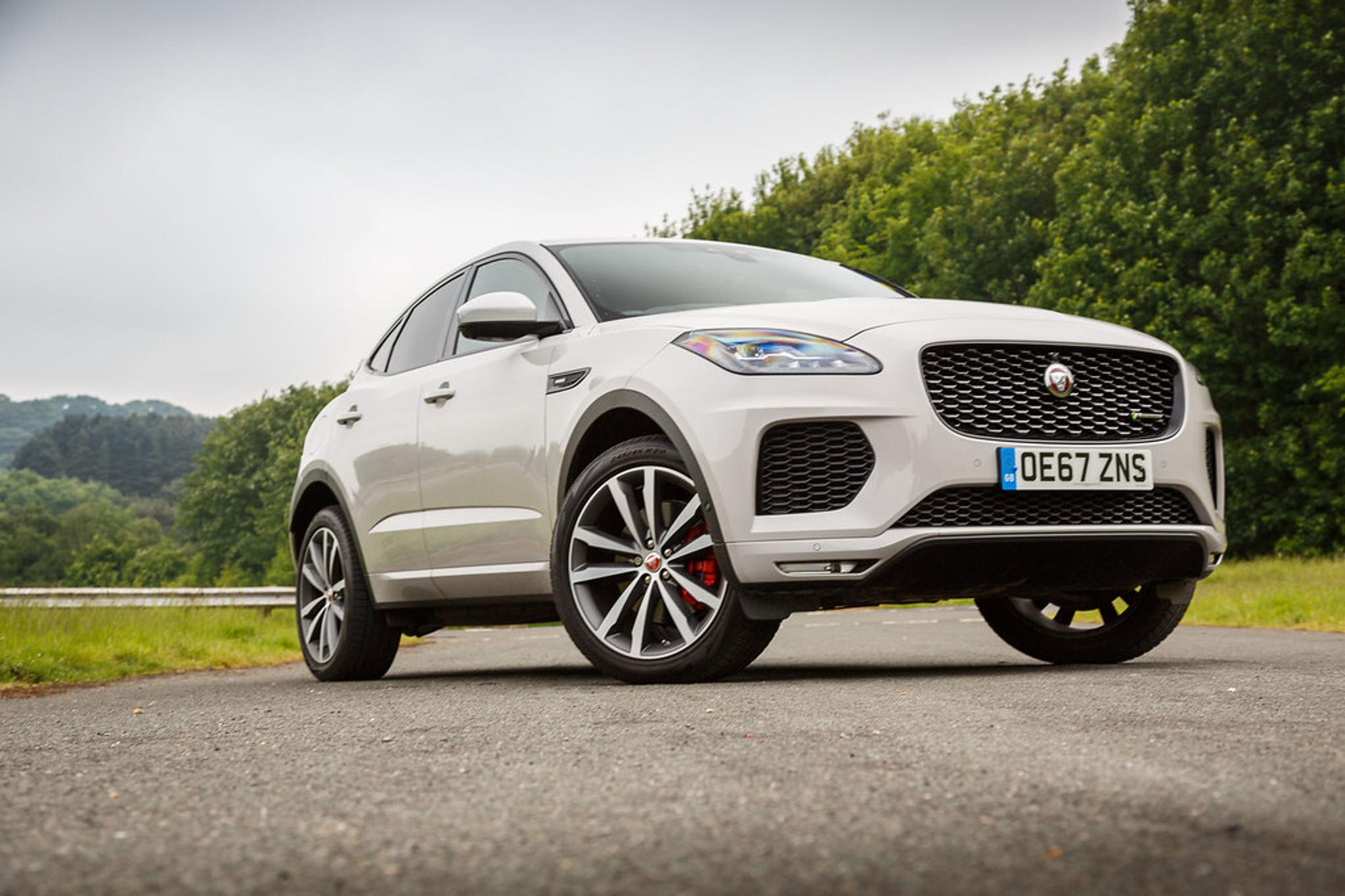
For close to a decade now buyers migrated away from sedans, minivans, and even full-sized SUVs to move increasingly towards the crossover car class. Minivans are practically extinct in 2021 and sedans are barely hanging on as luxury subcompact SUVs are thriving. New models take to production every year and old nameplates get better and better with every facelift and every remodel.
One thing’s for sure, if you’re in the market for a crossover in 2021, you’re spoiled for choice and carVertical is here to help you make the right decision, regardless if you have your eye on a second-hand vehicle or a brand-new one.
Every manufacturer is bending head over heels to get your attention with tantalizingly low price tags, modern exterior designs, premium materials, the latest in safety tech, plus abundant standard features lists. And in no better sub-segment is this more visible than in the urban-sized, crossover luxury SUVs class.

Looks can be deceiving!
Don't risk your safety - check it with carVertical first
In this article, we look at the luxury subcompact SUV car class’ top ten most desired models to see which is the best luxury subcompact SUV and if there are other serious contenders to the title.
In no particular order, we begin with...
Mini Countryman

Pros: roomiest Mini yet, able to fit comfortably a family of 4 – quirky-chic looks – loads of engine choices
Cons: No Android Auto and Apple CarPlay is optional – high-end price for what it offers
If you want to stand out and pay a hefty price for it, the Mini Countryman is the perfect car to meet that need. Refreshed for the 2021 model year, the Countryman gets a new grille, new front and rear bumpers, plus standard LED headlights.
On the plus side, the newest rendition of this bulked-up Mini comes with a vast array of powertrains to choose from (four, one of which is part electrical) and some fun standard features like its panoramic sunroof which would command a premium with most of its competitors. But lack of standard smartphone integration and the absence of Android Auto connectivity altogether make it a hard choice in 2021 when even entry-level sedans offer both on every trim level.
Looking at the Countryman’s powertrain lineup, we start with the base engine, a 1.5-liter turbo-3 that will deliver a decent 134 hp, especially for the Mini’s size. The first available upgrade is a turbo-4 that comes under the Countryman S trim and will belt out 189 hp to make for quite a fun driving experience. But, if nimble handling is what you’re after, then the John Cooper Works might spike your interest at a whopping 301 hp.
There was a mention earlier about a hybrid engine, and that’s the Countryman S E. It comes with an electric motor fed by a 9.6-kWh battery pack. Together with a turbo-3 powertrain, it can send 224 hp to the pedal, a respectable figure but nothing to write home about.
Mercedes Benz GLA

Pros: Stylish inside-out – a smooth ride – comfortable seating –one of the most advanced and intuitive infotainment systems in the industry
Cons: gets expensive fast – limited if not meager cargo space – short list of standard features for the price tag
The best feature of the 2021 GLA is that it’s a Mercedes. Because with that comes the guarantee of impeccable craftsmanship, stylish looks inside and out, and nothing but high-end materials as far as the eye can see.
There are so many options available on the Mercedes GLA that few cabins will ever look the same. But under the hood, for now, they’ll all sport the same engine, a 2.0-liter turbo-4 that with the help of an 8-speed dual-clutch automatic transmission will deliver 221 hp and 258 pound-feet of torque (350 Nm). Later this summer, two more renditions of the same powertrain will get introduced in the form of the AMG GLA35 at 302 hp and the AMG GLA45 at 382 hp.
Base GLA models will come equipped with perks such as LED headlights and taillights, an eight-way power-adjustable driver’s seat, a leather-wrapped steering wheel, a power liftgate, keyless entry and ignition, and a 7.0-inch instrument cluster.
A good car that missed the mark of being great by limiting its engine options and by cutting its standard features list short for the class it competes in.
Lexus UX

Pros: assertive exterior aesthetic – tons of active safety features – great mpg ratio – superb interior look and feel
Cons: cramped second row – unintuitive infotainment system
Base UX models come equipped with a 2.0-liter inline-4 engine that will deliver 169 hp, which is underwhelming, to say the least. A hybrid version is available in the form of the Lexus UX 250h that sports a different 2.0-liter plus an electric motor and set of batteries that will up the output at 176 hp, nowhere near enough to compete with most of the other models on our list.
What the UX has going for it, though, is safety. Scoring top marks on both NHTSA’s and IIHS’s tests, the Lexus received 5 stars out of 5 overall from the former and was awarded a Top Safety Pick by the latter.
As far as standard options go, all future owners can expect features such as Automatic Emergency Braking, Adaptive Cruise Control, Blind-spot Monitors, Active Lane Control, dual-zone automatic climate control, a 7.0-inch color touch, and a 7.0-inch instrument cluster, both Android Auto and Apple CarPlay connectivity, 4 USB ports, satellite radio, and Bluetooth audio streaming.
Exceptional list of standard features, especially considering the active safety features it includes. If a car could score 11 on a scale of 1 to 10, this is what its base model would look like.
Buick Encore

Pros: better looking than the previous rendition – exceptional infotainment system – perfect urban-sized
Cons: limited cargo area – bit narrow front seats – unimpressive fuel economy
One of the veteran models on the list, the Buick Encore, was supposed to be retired and replaced by the homonymous Encore GX. But its popularity with buyers convinced Buick to build the two models side by side and give the Encore a little sprucing up.
The 2021 rendition comes with a single engine choice, a tried-and-true 1.4-liter 4-cylinder that will only put out 138 hp and 148 pound-feet of torque (200 Nm). Far lower numbers than most other subcompact luxury crossovers on the list, but then again so it’s its price tag at just a hair above $23,000, almost half of that of many of its competitors.
Even so, base Encore models still come equipped with keyless entry and push-button start, Android Auto and Apple CarPlay, a 4G LTE Wi-Fi hotspot, and responsive 8.0-inch color touch.
For budget-conscious prospective buyers, it really doesn’t get any better than the 2021 Buick Encore. And it delivers great mpg numbers as well.
Buick Encore GX
Pros: modern exterior design – exceptional value for the money - upscale interior - loads of safety features (both standard and optional) - tons of passenger and cargo room
Cons: roof pillars reduce rear visibility
It’s hard to find fault with the Encore GX. Bigger, better, and more aesthetically pleasing than the Buick Encore, Buick’s latest crossover delights at every turn. With extra-small exterior dimensions that allow for nimble urban driving and easy parking, the GX still manages to offer plenty of leg- and headroom inside for its passengers, plus a whopping 50.2 cubic feet of total cargo space.
Under the hood, prospective buyers can choose one in two options – either the base 1.2-liter three-cylinder that will belt out 137 hp and 162 pound-feet of torque (220 Nm) or the available upgrade, the 1.3-liter three-cylinder powertrain at 155 hp and 174 pound-feet of torque (236 Nm).
Before you say the numbers aren’t so impressive, consider the petit exterior size of the GX and its lightweight chassis. With that in mind, both engines fare rather well in traffic and even on the highway.
Speaking of which, it’s worth mentioning that the 1.2-liter delivers 26 mpg (9l/100km) inside the city limits, 30 mpg (7,8l/100km) on the highway and 30 combined. The 1.3-liter fares even better at 30 mpg on urban drives and 32 mpg (7,3l/100 km) on the highway for a combined 31 (7,5l/100 km).
With new looks also comes an exceptionally long list of standard features that’s heavy on safety and connectivity options with Forward Collision Alert, Automatic Emergency Braking with Pedestrian Detection, Lane Keep Assist, Lane Departure Warning, and Cruise Control all fitted on every GX model. On top of these, base GX models come with perks such as Android Auto, Apple CarPlay, Bluetooth audio streaming, keyless entry and ignition, a leather-wrapped steering wheel, the SiriusXM satellite radio, both USB-C and USB ports, HD radio, navigation, and a 4G LTE Wi-Fi hotspot.
An obscenely long list of standard features, fit for a car twice the price tag.
Jaguar E Pace

Pros: comfortable, roomy interior that can accommodate 4 adults – lots of power provided by a spectrum of four-cylinder engines – the timeless Jaguar style translated into modern design language
Cons: quite expensive – the bigger the wheels you pick, the worst the ride quality gets – sub-par materials here and there
With zero SUV history behind it, Jaguar entered the luxury subcompact SUV race recently with the E-Pace model. A blank canvas meant that the car manufacturer could tap into the latest design trends and create a modern-chic car that anyone would be proud to see parked on their driveway. But it also meant that a few newbie mistakes crept into Jaguar’s decision process, like the undefendable choice of certain cabin materials, especially for E Pace’s price tag.
As far as powertrains go, prospective buyers can opt between two renditions of the same engine – a 2.0-liter turbo-four that’s tuned to deliver 246 hp and 269 pound-feet of torque (365 Nm) on every trim model but the R-Dynamic where its output is maxed out at 296 hp and 295 pound-feet of torque (400 Nm).
Base Jaguar E Pace models come fitted with All-Wheel Drive, 18-inch wheels, LED headlights, heated outside mirrors, 10-way power-adjustable front seats, a 10.0-inch color touch, two USB ports, Android Auto and Apple CarPlay, leather upholstery, Automatic Emergency Braking, and Active Lane Control.
The E-Pace is well above average in terms of powertrains, standard features, and exterior looks. But then again so is its price tag.
BMW X2

Pros: extra fun to drive – quite roomy for its exterior dimensions – high-end look and feel – great engine choices
Cons: gets awfully expensive extremely fast – hard brakes are too responsive for their own good, especially in high traffic – bad smartphone integration – less spacious than the X1
If you buy a BMW, you buy a great driving experience above all else. And on that promise, the X2 dully delivers.
With a 2.0-liter turbo-four under its hood that can churn out 228 hp and 258 pound-feet of torque (350 Nm) or a whopping 302 hp on the M35i, the BMW X2 is an absolute joy to drive. It also looks and feels high-end, inside and out, a true testament of German engineering, craftsmanship, and attention to detail.
But it does miss the mark on quite a few other features, such as a meager 22 cubic feet (623 l) of cargo room behind its second row, or the absence of Android Auto integration in 2021 when cars in the $6-7,000 price range include the feature as standard.
A responsive 8.8-inch color touch and Adaptive Cruise Control help X2’s case but not enough to justify the price tag. If you’re looking for nothing more than a fun drive and a premium look and feel, the X2 should be high on your shortlist. But if you also need more modern tech, active safety features, and complete smartphone connectivity, you’d best look elsewhere on our list.
BMW X1

Pros: great, comfortable front seats – nimble handling – good cargo area – strong turbo engines – quality build and materials
Cons: conservative design – cramped second row – uninspiring, almost outdated interior – gets expensive fast
The OG of small-sized luxury compact SUVs, the BMW X1 is virtually unchanged for the 2021 model year. With higher trim levels and options skyrocketing its price, the X1 makes the most sense in its base trim.
What can future owners expect out of said basic model, you ask?
Well... it starts with a 2.0-liter turbo-four engine under the hood that will deliver 228 hp and 258 pound-feet of torque (350 Nm). Cargo space is at just below 59 cubic feet (1670 l) if you fold the second row down, which is an exceptional figure for the class, and 27.1 (767 l) with all rows up.
All X1 models come fitted with power-adjustable front seats, a huge 8.8-inch color touch as part of the car’s infotainment system, Lane Departure Warning, Automatic High-Beams, Automatic Emergency Braking, and four USB ports. It does, however, include just Apple CarPlay as Android Auto is still missing on BMW’s list of options, an absurd mishap in the era of smartphone integration.
Phenomenal handling and tons of power simply don’t cut it anymore in the crossover car class. Prospective buyers expect modern exterior designs, a welcoming interior, and tons of on-the-go entertainment. The X1 misses the mark of all of them and with a cost of over $35,000, it’s mostly the brand name that keeps the model from sinking.
Audi Q3

Pros: dashing and spacious interior – great powertrain – tons of cutting-edge tech
Cons: old-looking exterior – bit big for urban driving – limited rearward vision – expensive
If you could only judge a car by its interior, the Audi Q3 would make the top three crossover luxury SUVs list. That’s due to the impeccable craftsmanship, the premium materials, and the overall look and feel of its interior. Top-notch are also the impressive 10.3-inch digital instrument cluster, the responsive 8.8-inch color touch that’s part of the car’s infotainment system, the heated front seats, the leather upholstery, and the panoramic sunroof.
But the Q3 isn’t perfect. First is the underwhelming cargo space with just 48 maximum cubic feet (1359 liters), 11 (311 l) below the X1 for example. And then there’s the noticeably outdated exterior to take into account.
With a major plus and two minuses, the only powertrain available adds to the Q3’s score by mirroring the figures you’ll find on the BMW X1 – a superb 2.0-liter turbo-4 that can belt out 228 hp and 258 pound-feet of torque (350 Nm). Surprisingly, though, if the X1 goes from zero to 60 mph in 6.3 seconds in All-Wheel Drive, the Q3 only manages to do so in 7 seconds under the same configuration.
A Top Safety Pick+ from the IIHS and a perfect 5 stars out of 5 from the NHTSA also help make Q3’s case in a car class that targets families directly.
All in all, the Q3 does manage to land in the upper echelon of our list, and with a fresh facelift would be a very strong contender for the best subcompact luxury SUV top spot.
Volvo XC40

Pros: dashing, two-toned exterior design – perky powertrains – a full-electric version – high-end interior
Cons: unintuitive infotainment system, limited cargo room
The car brand synonymous with safety, Volvo, is beginning to carve a name for itself in the new electric-powered crossover luxury SUVs class. The model chosen to spearhead Volvo’s expansion is the XC40, a modern, attractive luxury subcompact SUV that’s sure to turn a few heads down the street and attract quite a few buyers in 2021 and beyond.
What makes the Volvo XC40 so good?
First is the overall premium look and feel. Inside and out, the car looks high-end at every turn and sports that je ne sais quoi that demands attention and admiration.
Then is the long list of standard features as the XC40 Momentum, the base trim, comes with perks such as a huge 12.3-inch color touch, voice-activated controls, keyless start, LED headlights, two USB ports, satellite navigation, a power liftgate, an eight-way power-adjustable driver’s seat, rain-sensing windshield wipers, Blind-Spot Monitors, Lane Keep Assist, Lane Departure Warning, Forward Collision Mitigation, adaptive headlights, and both Android Auto and Apple CarPlay.
Under the hood sits one in two versions of the same 2.0-liter turbo-four engine – the standard 187 hp and 221 pound-feet (300 Nm), or the upgraded 248 hp and 258 pound-feet (350 Nm) version. Considering the latter commands just a $2,000 premium, it’s safe to say that most retail buyers will go for the stronger version.
A third option comes in the form of the XC40 Recharge EV which boosts 2 150-kW electric motors, one for each axel, supplied by a 78-kWh lithium-ion battery for a total output of 402 hp. Supercar figures that absolutely no competitor can come near.

Check your VIN
Avoid costly problems by checking a vehicle's history. Get a report instantly!
Conclusion
With so many options to choose from, the task of buying a luxury subcompact SUV can seem daunting at times. But with proper research and the right tools and services, such as the ones delivered by us here at carVertical, you’ll be able to find the best subcompact luxury SUV to meet all your needs.

Article by
Aivaras Grigelevičius
Aivaras has been excited about cars since he was a little kid. Later, this passion for drivable objects (and everything that surrounds them) grew into work as an automotive journalist. Since then, Aivaras has written for several different magazines, covering anything with an accelerator pedal. He has a soft spot for cars with an Alfa Romeo badge.
